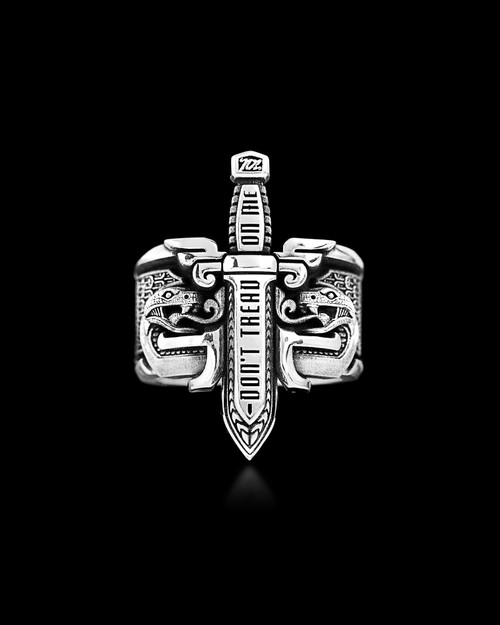Sterling Silver .925 ★ Handcrafted in the USA
Includes premium gift box with protective pouch & polishing cloth.
A “dress” style buckle. Pairs best with our 37mm height belts.
DIMENSIONS
77mm width / 48mm height
PRODUCTION & HANDLING TIMES
NightRider Jewelry pieces are handcrafted to order, requiring 2-3 weeks of production time. Place your order, and we'll start making it—just for you. LEARN MORE ❯❯
Need your order by a certain date? Call us at 800.566.8661.
Read more about the Don't Tread On Me series in our Blog post:
DON’T TREAD ON ME
JUN 2013
made in america
That’s not just a snappy catchphrase around here, it’s a deeply held belief. Because every piece of NightRider Jewelry that we pour our heart and souls into represents our American Dream.
MADE IN AMERICA
That’s not just a snappy catchphrase around here, it’s a deeply held belief. Because every piece of NightRider Jewelry that we pour our heart and souls into represents our American Dream.
proudly handcrafted
At NightRider Jewelry we believe in family, freedom, exceptional craftsmanship—and doing things the right way, not the easy way. We make everything here in the USA, and each piece is handcrafted by real artisans.
PROUDLY HANDCRAFTED
At NightRider Jewelry we believe in family, freedom, exceptional craftsmanship—and doing things the right way, not the easy way. We make everything here in the USA, and each piece is handcrafted by real artisans.
premium packaging
All jewelry purchases arrive in a luxurious NightRider presentation gift box including a pouch, polishing cloth, and more.
PREMIUM PACKAGING
All jewelry purchases arrive in a luxurious NightRider presentation gift box including a pouch, polishing cloth, and more.
true to you
You realized long ago that true freedom isn’t a freebie, it takes work to maintain it. And that’s OK because you not only know the value of hard work, you’re living proof of it. Here’s to those who’ve made their own way in this world and aren’t afraid to show it.
TRUE TO YOU
You realized long ago that true freedom isn’t a freebie, it takes work to maintain it. And that’s OK because you not only know the value of hard work, you’re living proof of it. Here’s to those who’ve made their own way in this world and aren’t afraid to show it.














